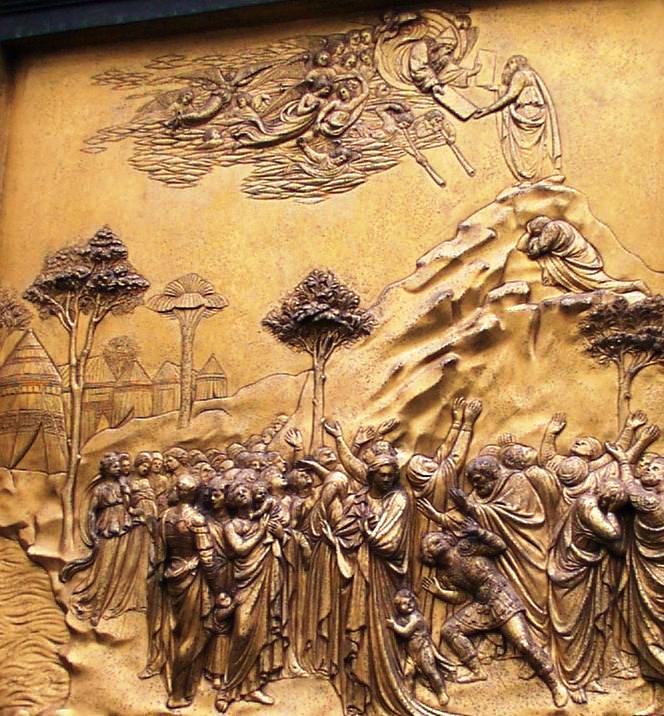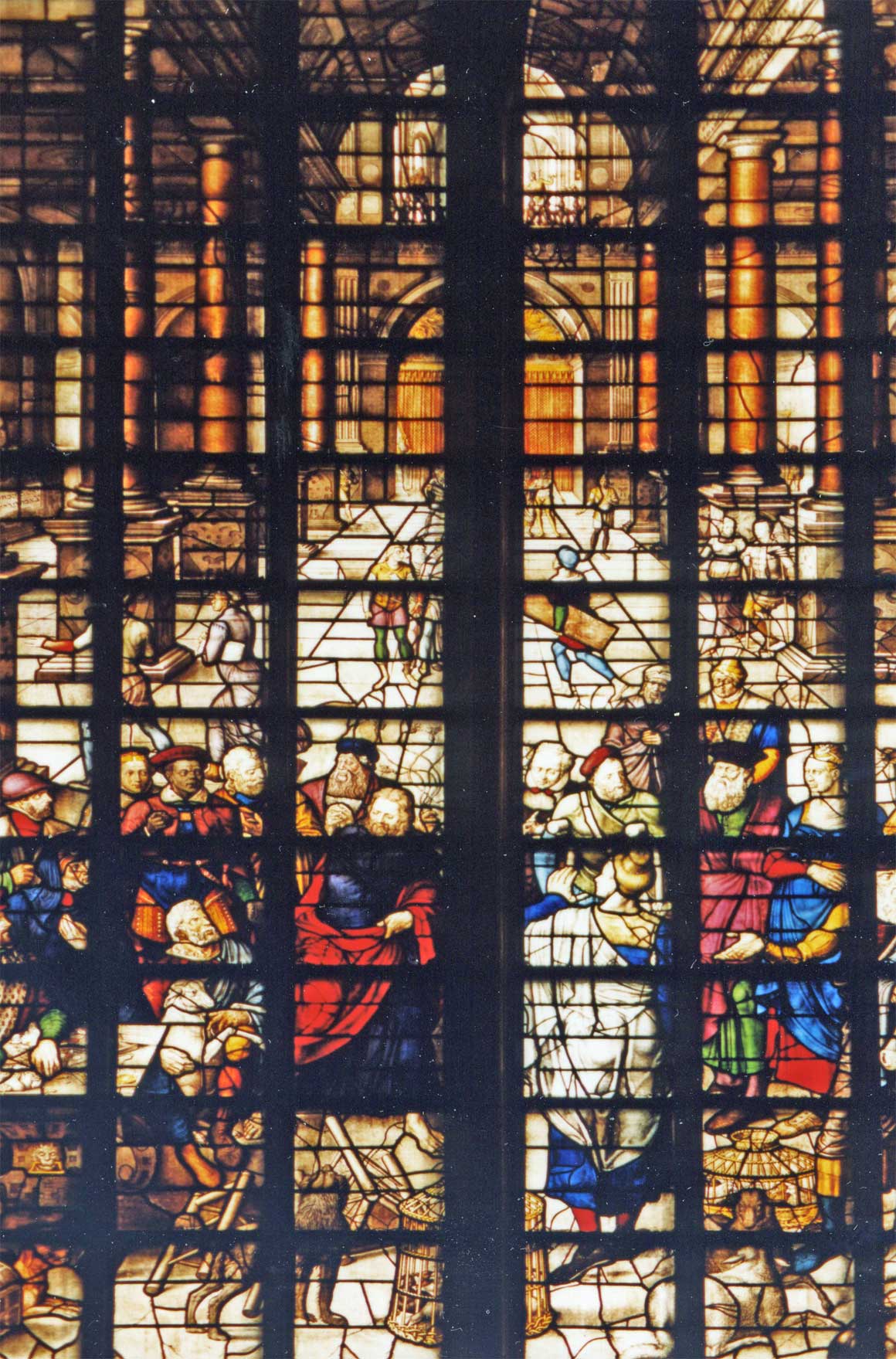Lenten Sunday3 B (15 Mar 2009)
Ex 20. 1-7; Ps 19; 1Co 1. 22-25; Jn 2. 13-25
Homily of Fr. Paul Panaretos, S.J.
All Our Senses
The familiar gospel-scene of Jesus putting the merchants out of the temple area begins his life of ministry, following miracle at Cana. Jesus’ first of seven signs performed at Cana and the cleansing of the temple form Chapter 2 of the Fourth Gospel. In the temple episode the disciples recalled and remembered: they recalled the words of Scripture, Zeal for your house will consume me; and when [Jesus] was raised from the dead, his disciples remembered that he had said...“Destroy this temple and in three days I will raise it up.” Recalling and remembering led them to believe the Scripture and the word Jesus had spoken.Ex 20. 1-7; Ps 19; 1Co 1. 22-25; Jn 2. 13-25
Homily of Fr. Paul Panaretos, S.J.
All Our Senses
 Recalling and remembering is more than interpreting in a living way so that they could learn the meaning of both God’s word and God’s son. Recalling and remembering is how we stay close to Jesus, and how we enter repeatedly his paschal mystery. Lent is about drawing closer to Jesus and entering more deeply his paschal mystery.
Recalling and remembering is more than interpreting in a living way so that they could learn the meaning of both God’s word and God’s son. Recalling and remembering is how we stay close to Jesus, and how we enter repeatedly his paschal mystery. Lent is about drawing closer to Jesus and entering more deeply his paschal mystery.Our Catholic experience communicates the paschal mystery via all our senses: fire, color and images allow our vision to remind us; words sung and proclaimed allow our hearing to remind us; bread, wine, water, oil, ashes and palms allow our taste and our touch to remind us; and even wax, incense and balsam allow our olfactory sense to remind us. Lenten practices focus on one of more of our senses so that our whole body and heart may become more deeply aware of Jesus: present, loving and living as our dead and risen Messiah.
The call to pray invites us to say more than words. To pray means Christians go beyond words to detect the presence of Jesus in our midst. Praying is not exercising our human wisdom or human strength. Praying deliberately open us to God’s wisdom and God’s strength, which registered in flesh and blood as Jesus, God’s son, who continues to be present more powerfully by his Holy Spirit.
In the beginning of God’s relationship with people, words figured large, and particularly ten words enshrining actions to do and not to do; we call them commandments but Jews even today continue to call them words, reminding people that God spoke them for their good. God’s goodness to people permeated their existence. That moved the Psalmist to cry, Lord, you have the words of everlasting life.
 Words became flesh and blood in Jesus. One like us continued to speak for our good. Jesus still continues to speak for our good in the power of his Holy Spirit. Lent allows us to accept more willingly the particular way Jesus communicates to us now, at each moment. Lent lived well transforms us, makes us more alert to Jesus’ ongoing communication to us.
Words became flesh and blood in Jesus. One like us continued to speak for our good. Jesus still continues to speak for our good in the power of his Holy Spirit. Lent allows us to accept more willingly the particular way Jesus communicates to us now, at each moment. Lent lived well transforms us, makes us more alert to Jesus’ ongoing communication to us.Savoring one of our senses, using one thing to get one of our five senses working--an image like a candle flame or the concentrated gleam of the tabernacle; an aroma; the taste and texture of Jesus’ Body and Blood or the moisture of holy water traced on our bodies; the vibrations of music or singing--connects us with Jesus.
It opens us to Jesus communicating to us through personal praying, works of service and the rhythms the life of the church. In particular, the liturgy is Jesus speaking, and it is us speaking, too. It is a great gift helping us to continue to recall and to remember what is most real and life-giving, the paschal mystery of our dead and risen Messiah, Jesus.
In your daily 15 minutes with Jesus this week, pause in the light of the Trinity. Ask the disciples to present you to Jesus so that you may both be aware of Jesus communicating to you and express to him whatever is on your heart and mind. Resolve to be more attentive to the church’s ways and its holy things because they communicate God’s love and care for you. Ask for the grace to know more clearly how Jesus invites you to join him. Close by saying slowly the Lord’s Prayer, which keeps us in close communication more by deed than by word.
____________________________________________
Wiki-image of the reception of the Ten Words is used according the GFDL. Wiki-image of Jesus cleansing the Temple is in the public domain.
No comments:
Post a Comment